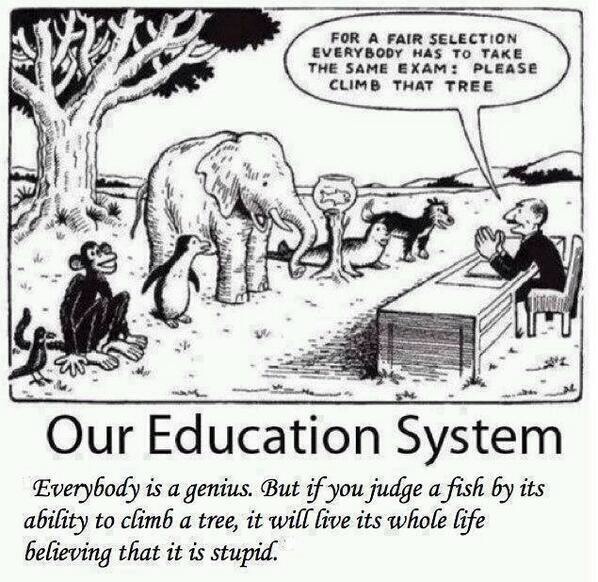I am surmising that last week’s educational satirical cartoon struck a nerve. And a good one. There was a lot of buzz that generated both questions and comments. My evil plan succeeded.

It is easy to join the bandwagon, grab our pitchforks, light our torches, and as an “educational village,” storm the proverbial castle. One reader commented “What’s the solution? This article seems half-written.” Valid question…and as educators, we need to collaborate for a better solution for the sake of our kids.
My explanation comes from my own experiences regarding this topic and what I am observing about it…so here is my two cents that I gave back to this fellow educator:
I think your “what’s the solution” question is valid and I will attempt to answer it. I have seen this topic having been ascribed to standardized testing in some other posts and that is not what I am addressing. My thoughts were more along the line of how the classroom can become so sterile because we as educators fall into ruts and have very limiting assessments in the course of a semester. You know, the test and quiz.
So, based on the context in which I am writing, my solution does not involve more funding, more resources, or more time. It is looking at the class more intentionally and more strategically with three questions: 1) what are the big ideas and goals for my class that I want to influence my students with years after the course is over? 2) how would my students go about showing me the extent to which they mastered my goals for the class? and 3) what, then, would we need to do each day in class to properly prepare my students for those milestones that I have set up?
My urging is that teachers think through how to make certain that their students “get it” and not just be sure all of the content happens. Sure, content is important, but if I am not teaching my students how to interpret that content and create meaningful conclusions that change their thinking, then what is the purpose? For me, the monkey and the tree comic can illustrate how limited our scope is on assessment. I combat this by telling my students there are MULTIPLE ways for them to be successful in my class because I know that one size assessment does not fit all.
And so I use discussion, group work, modeling, reflective writing, creating videos, reading, interviewing, as well as the common test and quiz. Not all of these are used in every course, but I believe every teacher should be equipped with a tool belt FULL of meaningful ways to engage their students to create change.
All of the aforementioned tools are forms of assessment. I need to realize my class has not only the tree-climbing monkeys, but elephants, dogs, seals, and penguins (and this is no labeling of my awesome students – just borrowing from the comic).
We live in a “connecting” society, not purely an information society. We still teach as if we live in the Industrial Revolution, producing students to go back into the factories…and it is working great, except…we no longer live in that age. Needs have changed.
These ideas do not solve all of the problems, but they are helping me to treat my students as unique individuals with unique giftedness, always pushing to his or her unique calling.
Community Input: So where do you think the solution lies?
I love this cartoon… maybe partly because I love satire, but that’s off topic. Students have so much pressure put on them to be smart in the same ways rather than learning what their strengths are and playing off those. I like the idea of handpicked (even student picked) assessments that provide a variety of learning experiences and perhaps will even push some of the “smart” (linguistically mathematically intelligent) students out of their comfort zones to use unfamiliar skills.
Thanks for your comments, Monica. I think the point is clear that we as teachers can quickly fall into ruts of assessment and we fail to see perhaps a better “best way” to see how well they “get it.”
So that’s the case? Quite a retviaelon that is.
We live in a society that people put lables on students as “smart” or not because they are not able to do a certain task that the teacher assigns. I agree with this article in the thought that each teacher needs to understand and realize that each classroom has not only monkeys that can climb the tree, but also elaphants, dogs,and penguins. Each human being learn differently.
And I think you took away an excellent point, Annie. To be learner-centered means my focus is on my students truly “getting it” and not just the fact that content has been covered. Thanks for your comment.